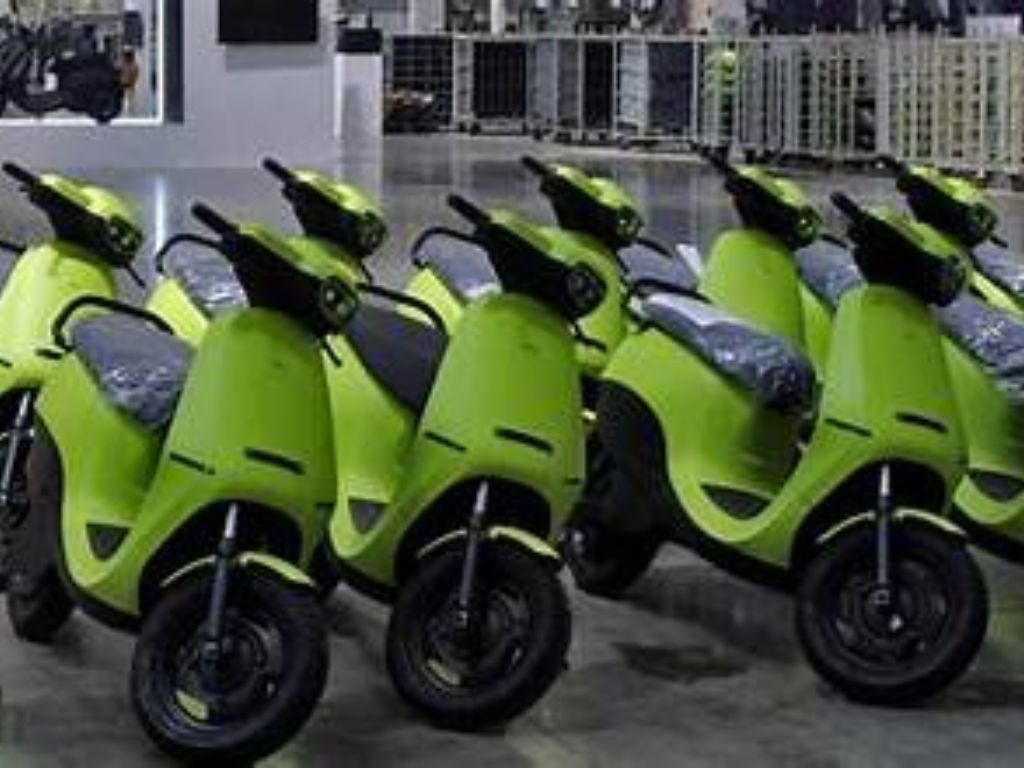Following a 42% drop in sales in April 2025, Ola Electric lost its top spot in the Indian electric two-wheeler market to TVS Motor.
Last month, Ola registered 19,709 cars, gaining a 21.46% market share. Bajaj Auto and Ather Energy took 20.7% and 14.3% of the market, respectively, although TVS Motor overtook them with a 21.5% share.
Ola Electric registered 34,163 vehicles in April 2024, reaching a peak of 53,647 units in March 2024. They still haven’t reached their goal of 50,000 monthly sales to reach EBITDA breakeven, though.
Inconsistencies in sales figures, problems with car quality, and anomalies in operations have also put the corporation under regulatory scrutiny.
The market for electric two-wheelers in India shows an unexpected shift in power
The recent switch in leadership from Ola Electric to TVS shows how established automakers are effectively taking on EV startups in India.
Since September 2022, Ola had dominated for five straight quarters, holding a roughly 35% market share by November 2023.
With 19,736 units and a 21.5% market share in April 2025, TVS has now risen to the top, earning an impressive 154% year-over-year gain over April 2024.
This change reflects a larger pattern in which established manufacturers are successfully using their decades of manufacturing experience, well-established distribution systems, and trusted brands to advance in the EV market.
This shift is especially remarkable since, despite their early seeming sluggishness in adopting electric mobility, these established businesses have effectively implemented methodical, measured measures that are now yielding positive results.
Despite leadership changes, the sector’s growth is still strong, as seen by the global electric two-wheeler market’s 40% year-over-year rise to 91,791 units in April 2025.
Different routes to success for EVs in the Indian market
Ola Electric’s rapid expansion plan contrasts sharply with TVS Motor’s cautious approach to the EV sector, providing valuable insights into sustainable growth.
TVS gradually increased its reach, surpassing 200,000 iQube sales by October 2023 since its launch in 2021, whereas Ola concentrated on quick scaling through its Futurefactory and aggressive sales goals.
By forming global alliances and acquiring a 75% share in the Swiss E-Mobility Group to improve its supply chain and technological prowess, TVS bolstered its position strategically.
The company’s 100 years of expertise in the automobile industry gave it benefits in quality assurance, manufacturing optimization, and after-sales service—all of which are important considerations for Indian consumers when assessing the adoption of new technologies.
This tendency is consistent with global trends, which show that after early delays in entering the market, pure-play EV businesses are gradually being caught up to by established automakers with extensive industry knowledge.
With four companies (TVS, Ola, Bajaj, and Ather) owning a combined roughly 78% market share 2, the competitive market structure currently developing in India indicates the industry is entering a more mature phase where long-term winners will be determined by execution and customer experience.
Structural impediments to India’s electric vehicle revolution
Even though sales of electric two-wheelers have increased quickly, the sector’s full potential is still being limited by major infrastructure and regulatory issues.
Given that almost 85% of EV charging takes place at home, India’s charging infrastructure is still woefully inadequate, with only 927 charging stations recorded as of mid-2020 5. This causes range anxiety among prospective purchasers.
There is uncertainty for both manufacturers and consumers due to the complicated and dynamic regulatory environment, which requires EV companies to deal with numerous federal and state agencies that monitor compliance.
Although there are still implementation issues, government programs like the FAME program and the National Electric Mobility Mission Plan seek to hasten adoption in order to reach the goal of 30% EV penetration by 2030.
Despite the long-term financial advantages of lower running expenses, the high initial cost of electric vehicles in comparison to conventional options remains a hurdle in India’s price-sensitive industry.
These systemic issues contribute to the explanation of why electric two-wheelers continue to account for a comparatively small share of India’s enormous two-wheeler market, even in spite of the government’s aggressive electrification objectives and the industry’s remarkable development rate.

